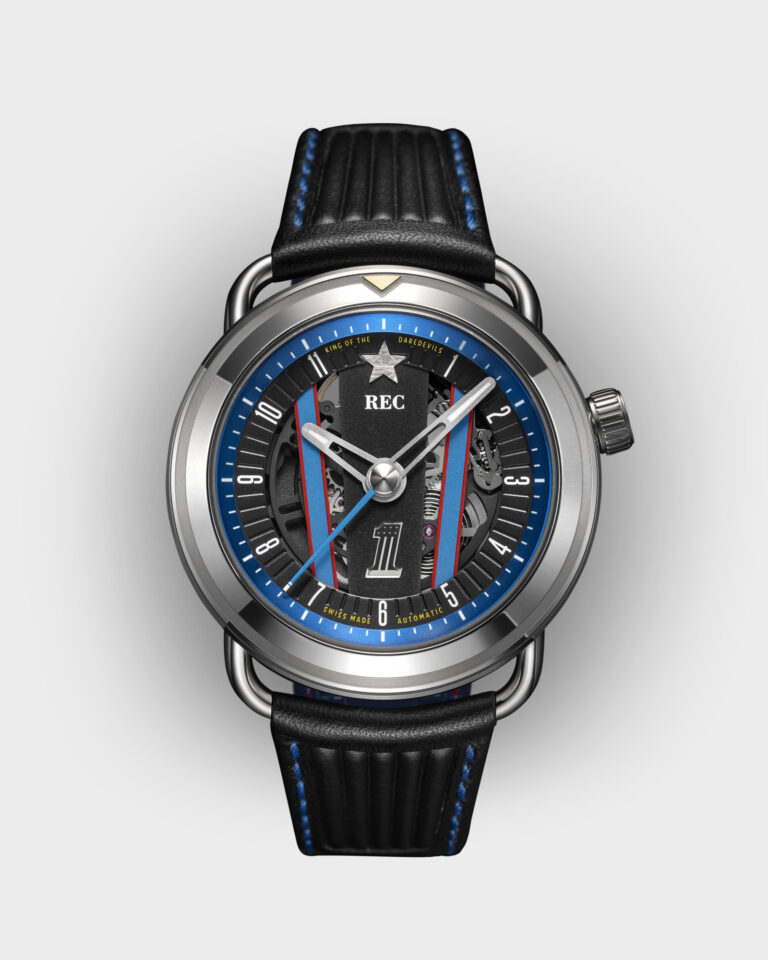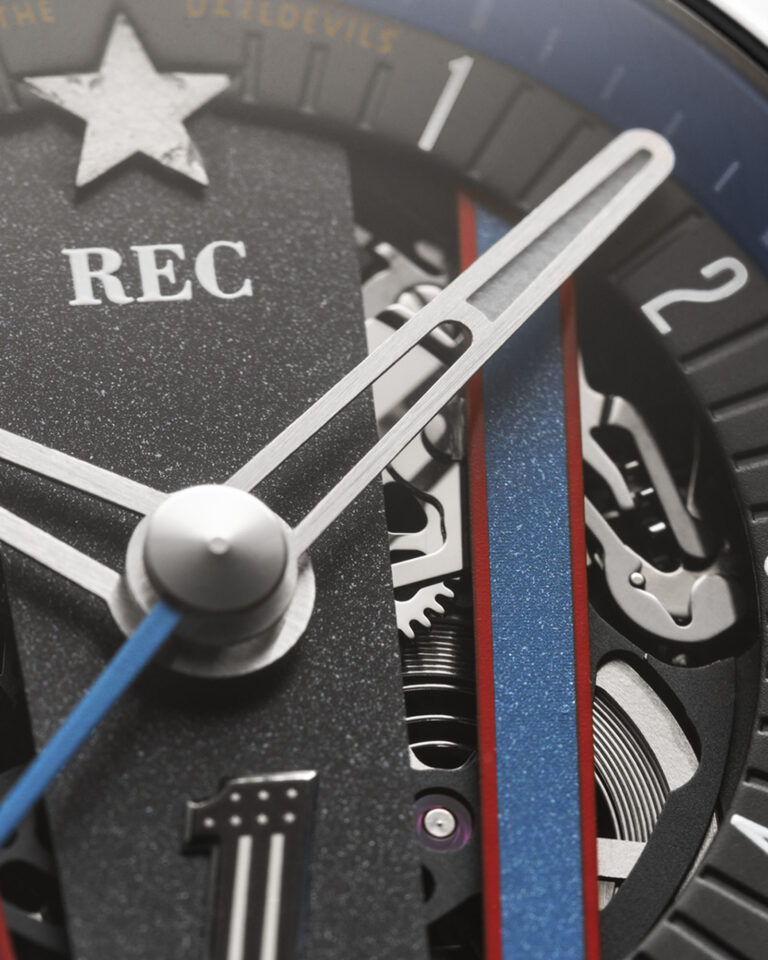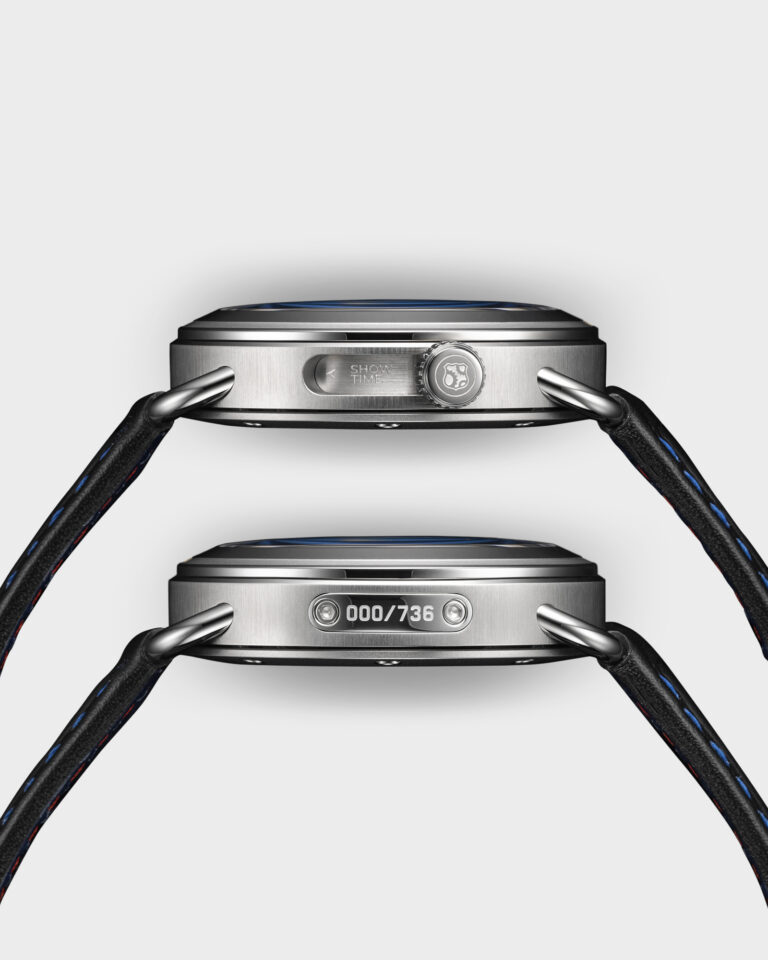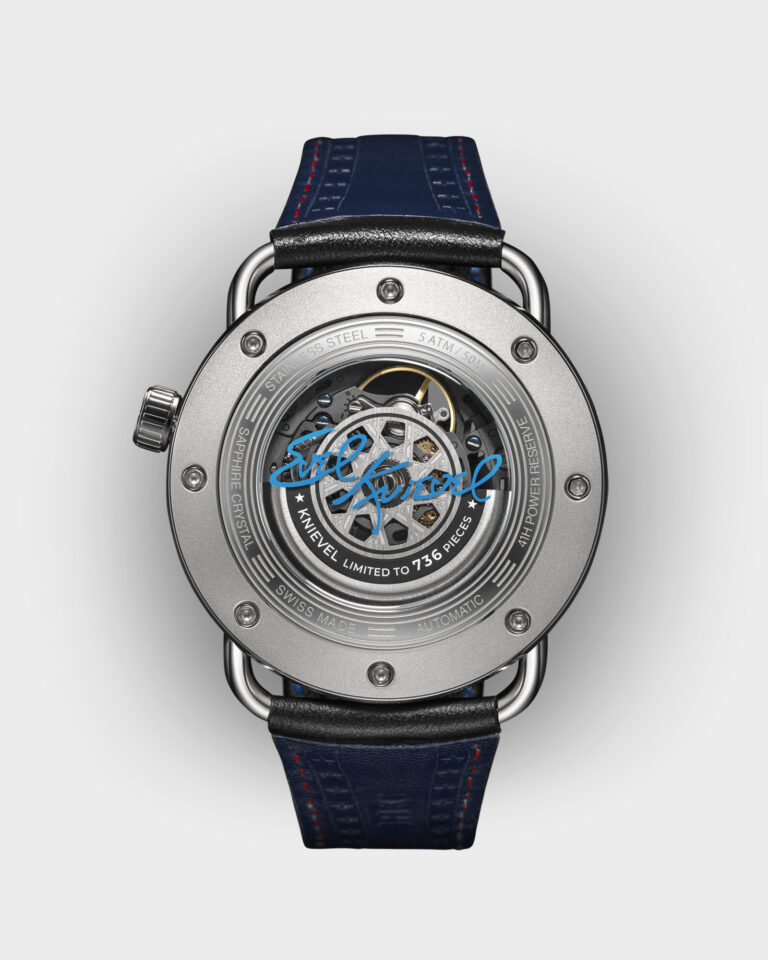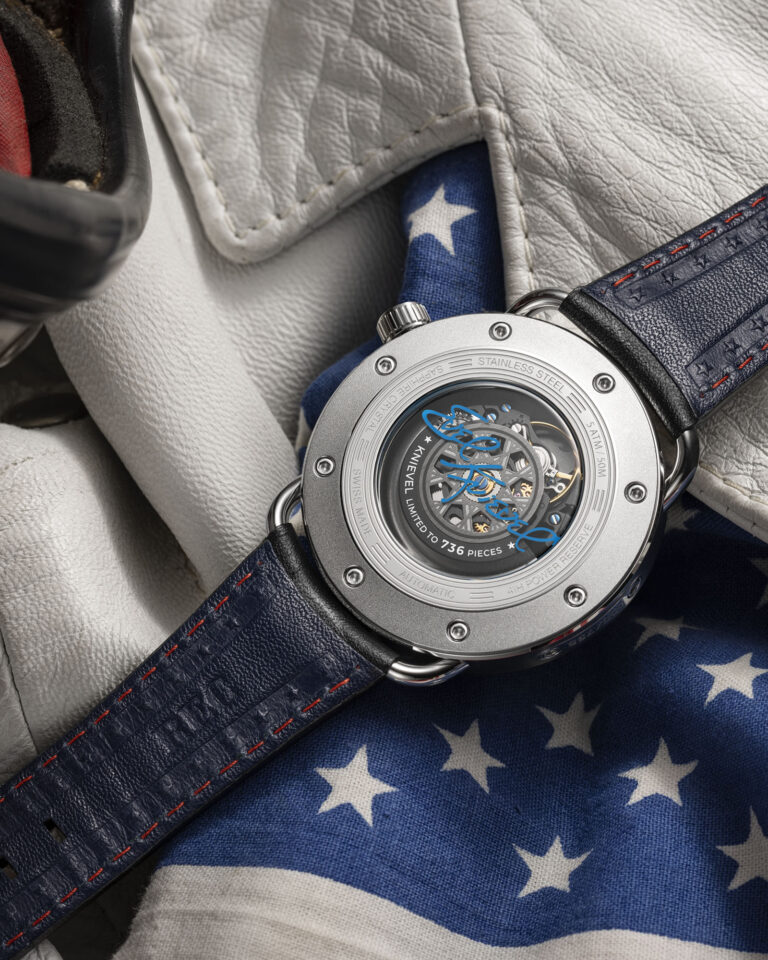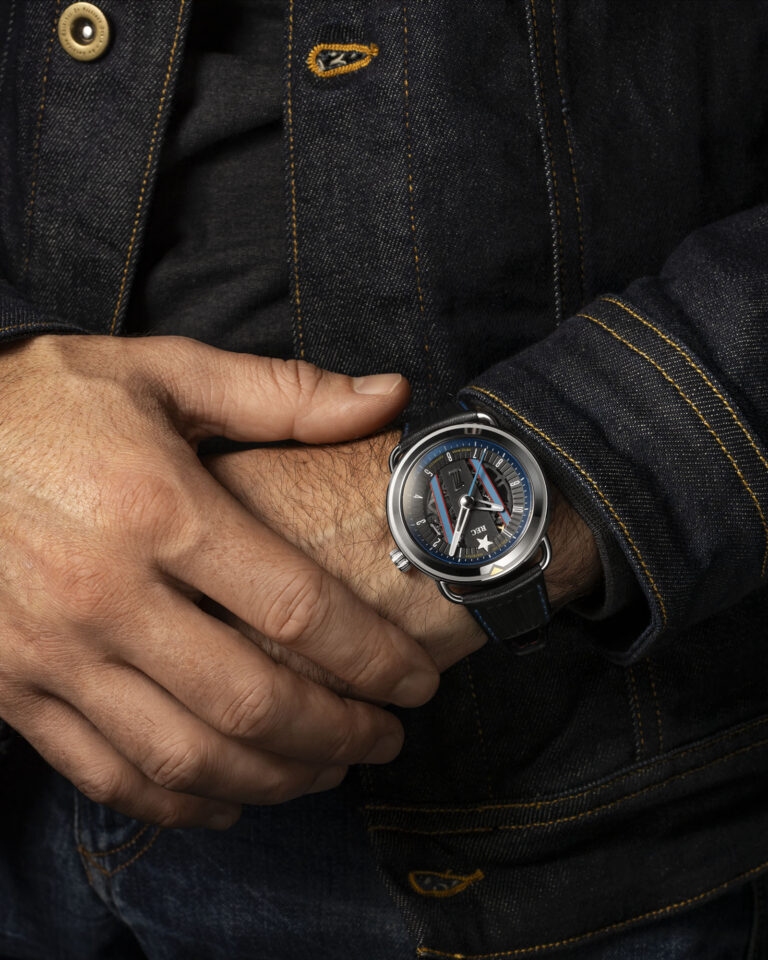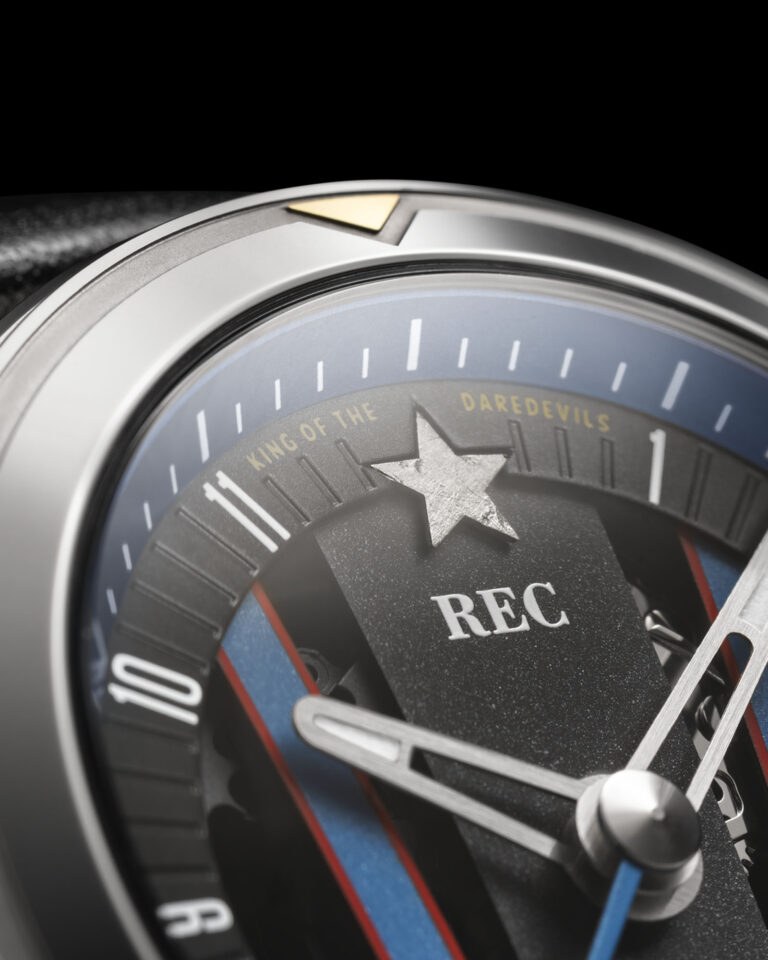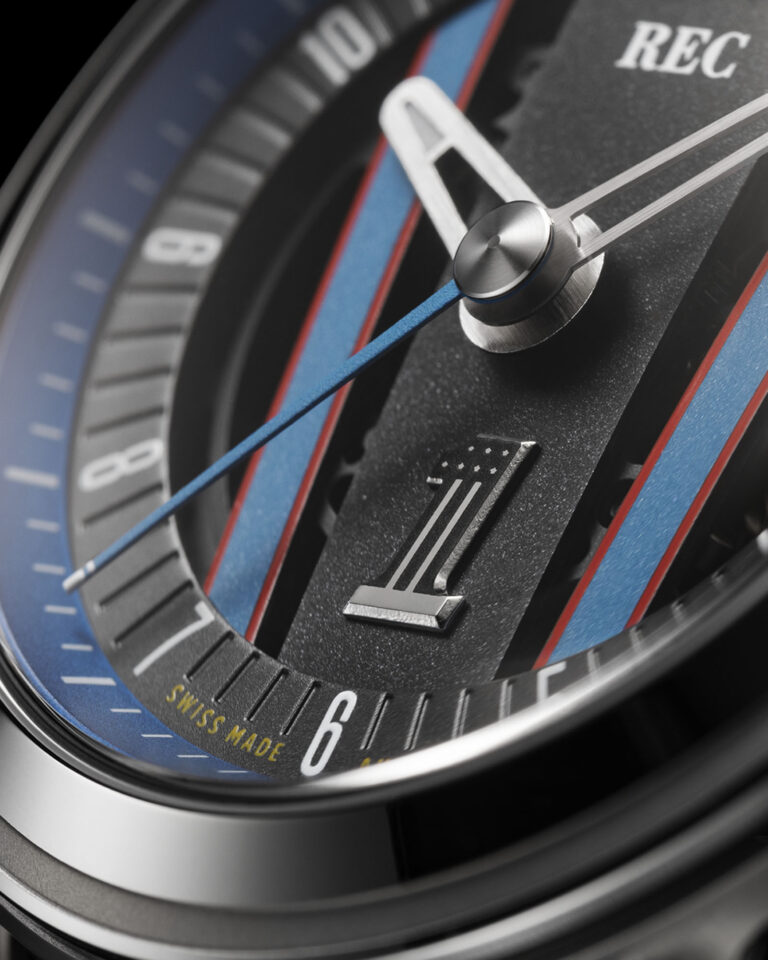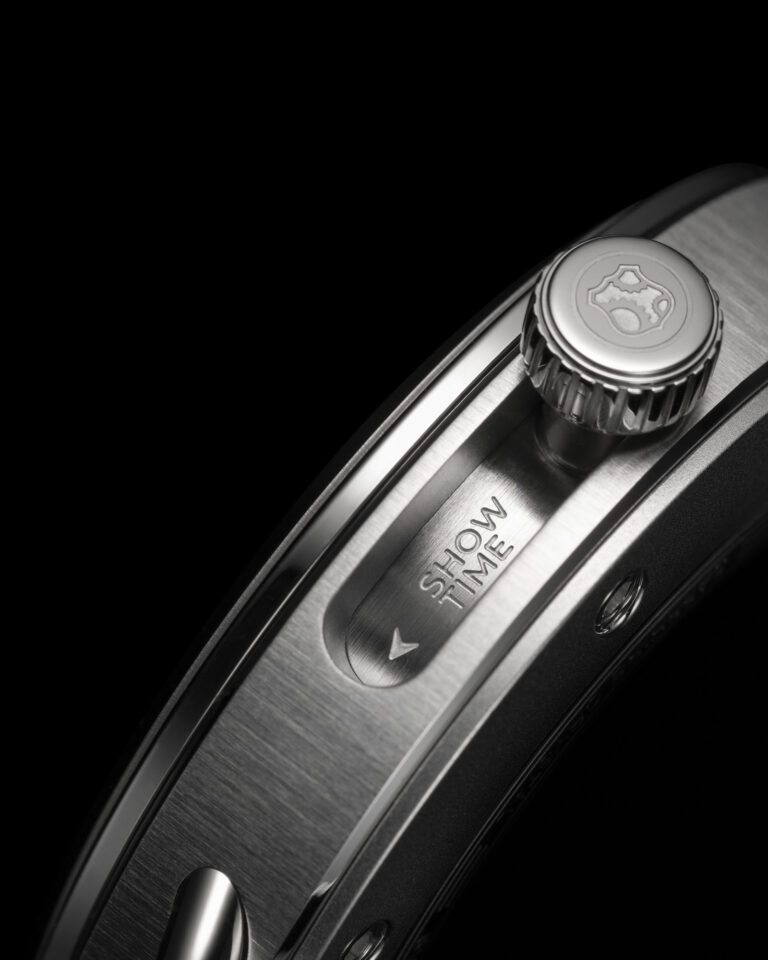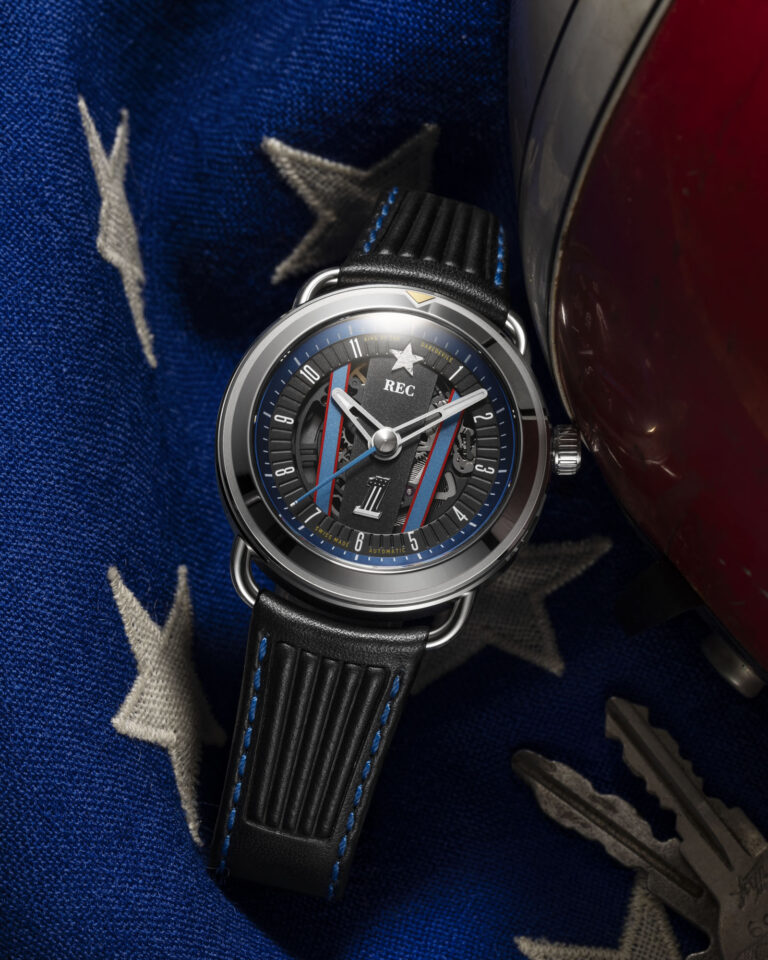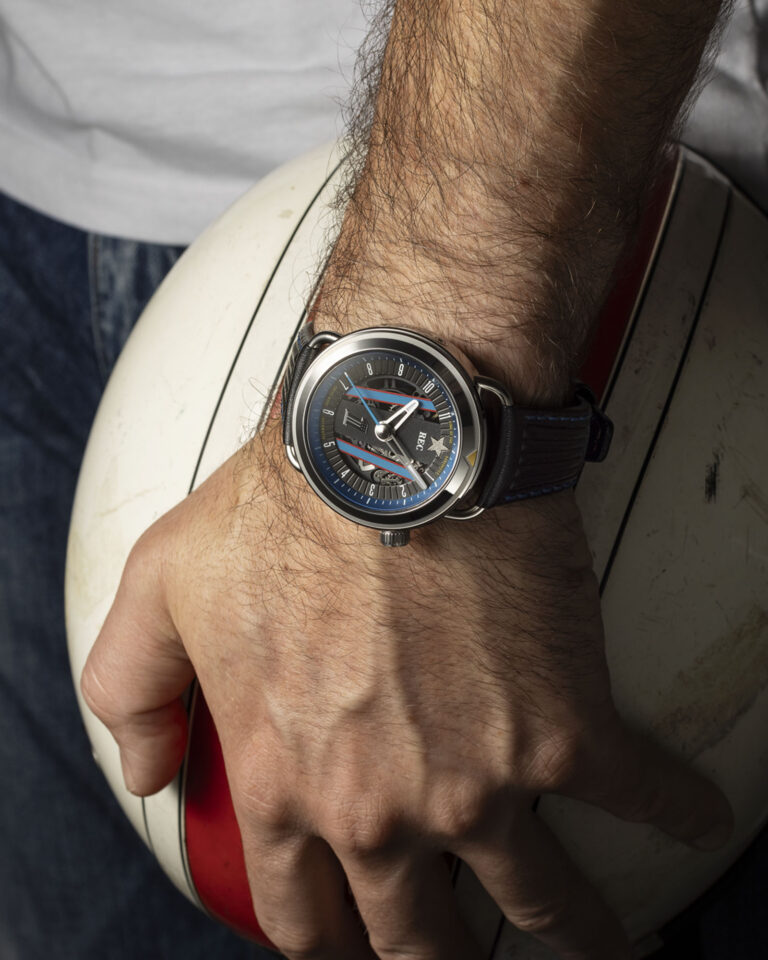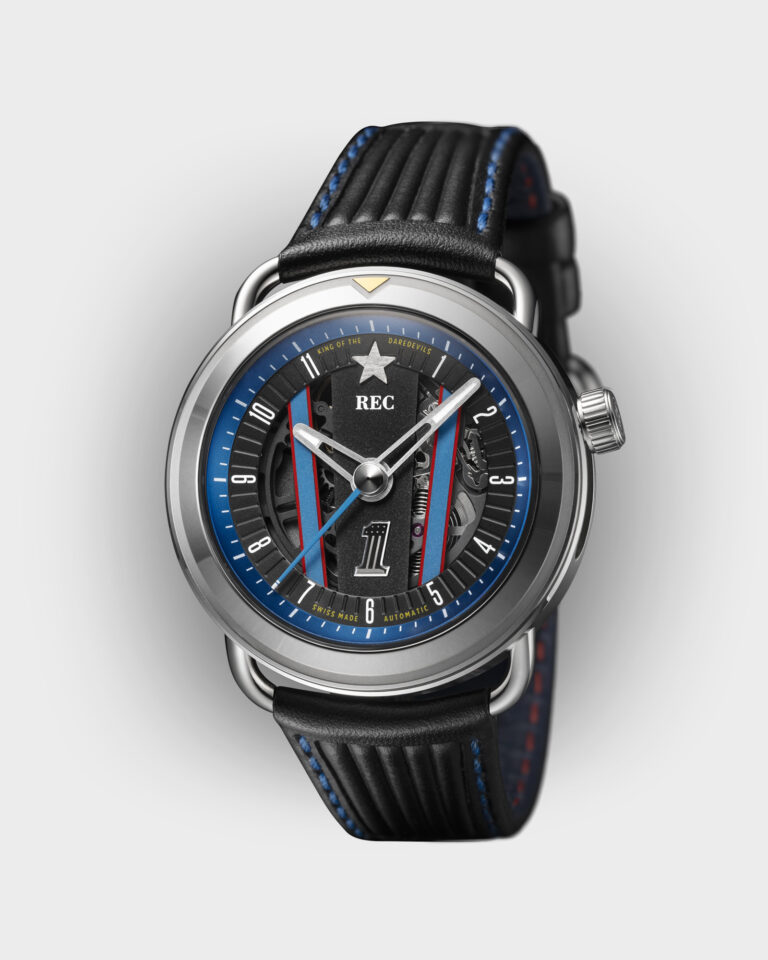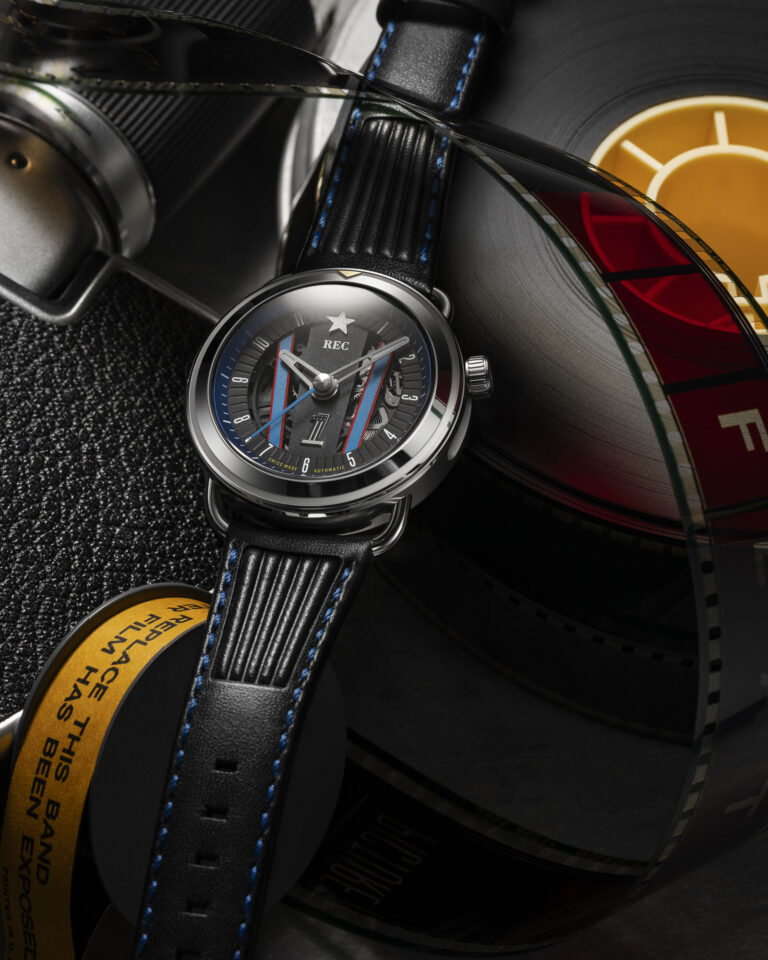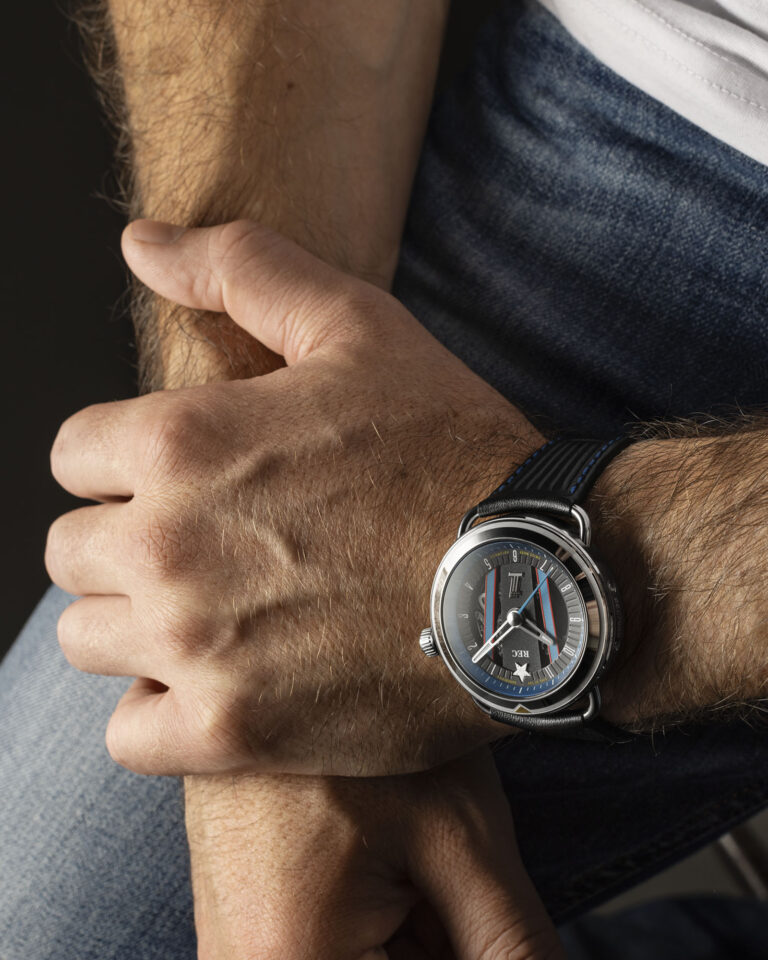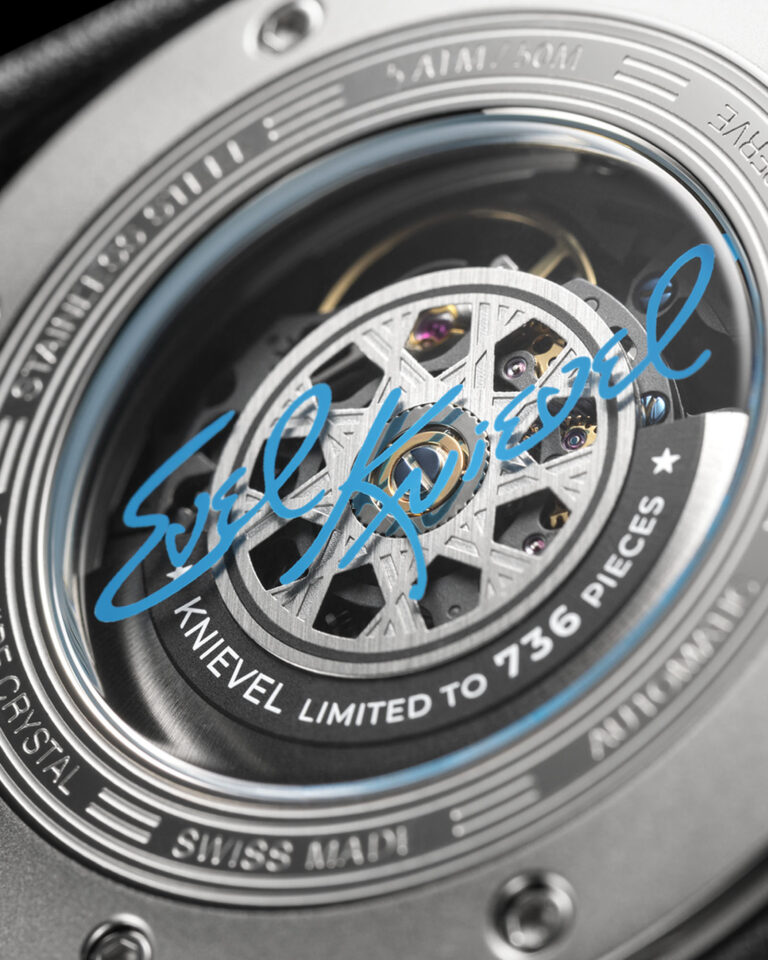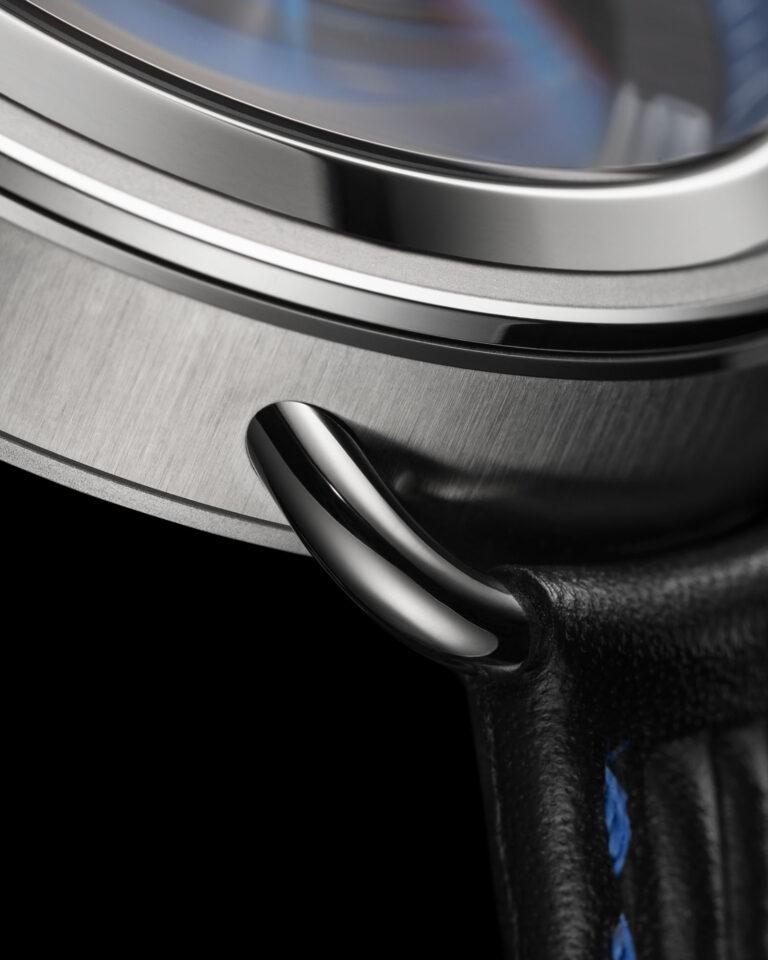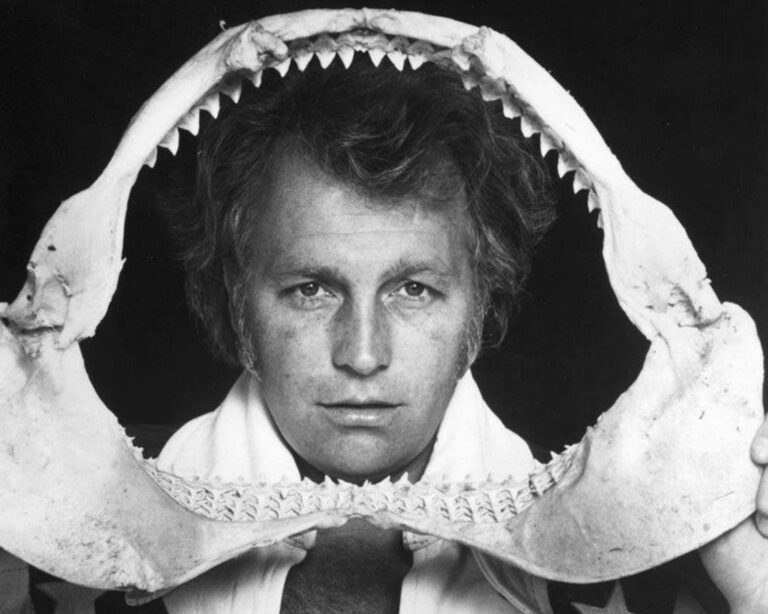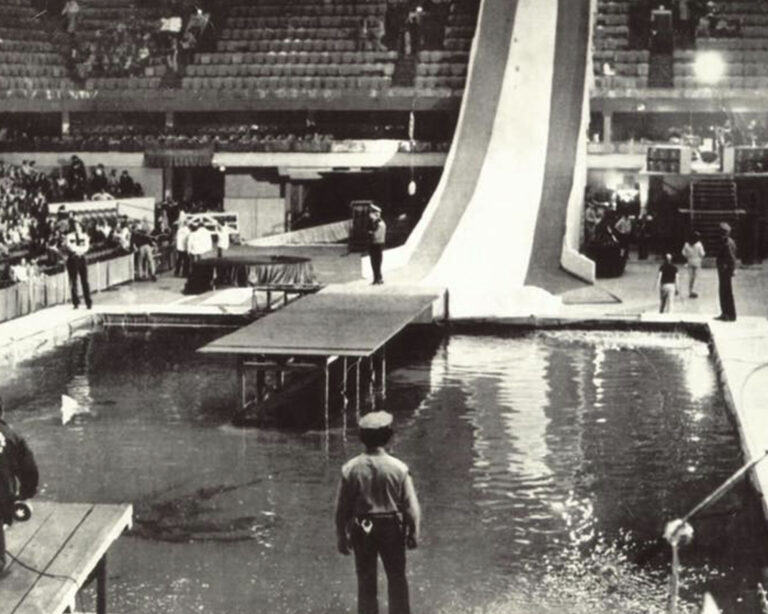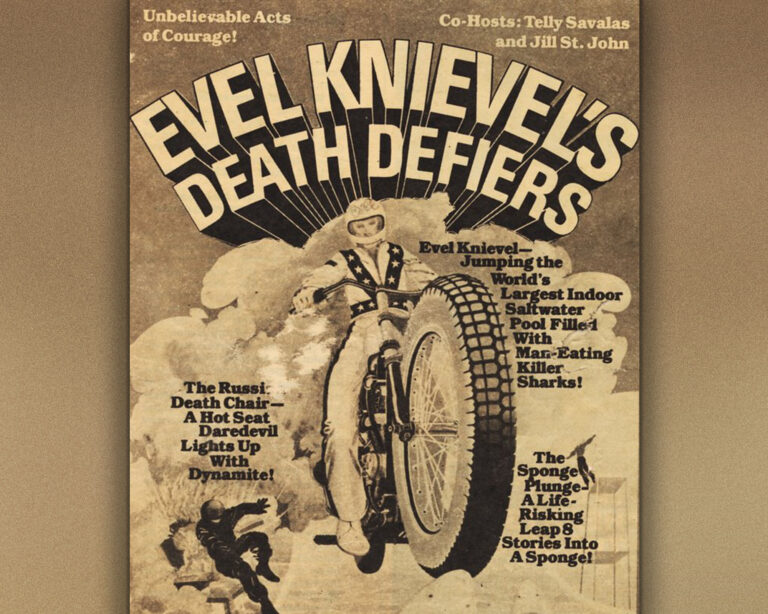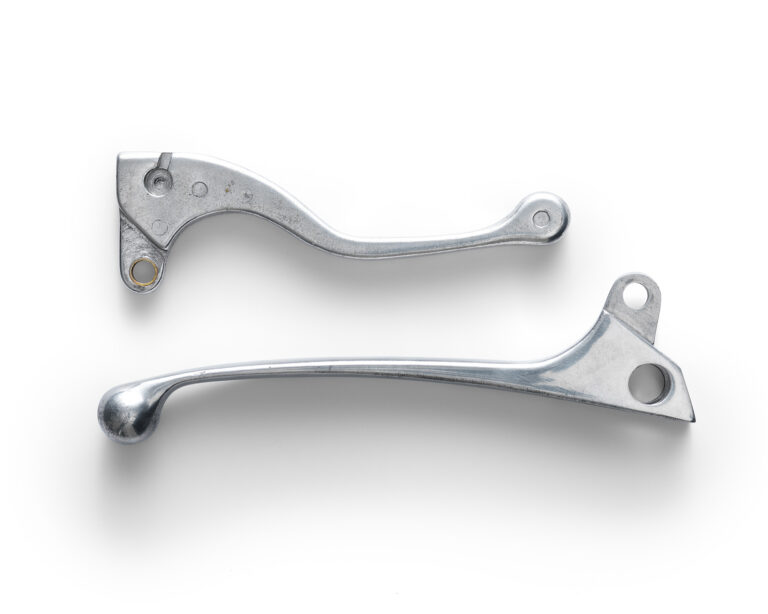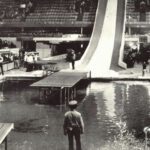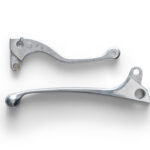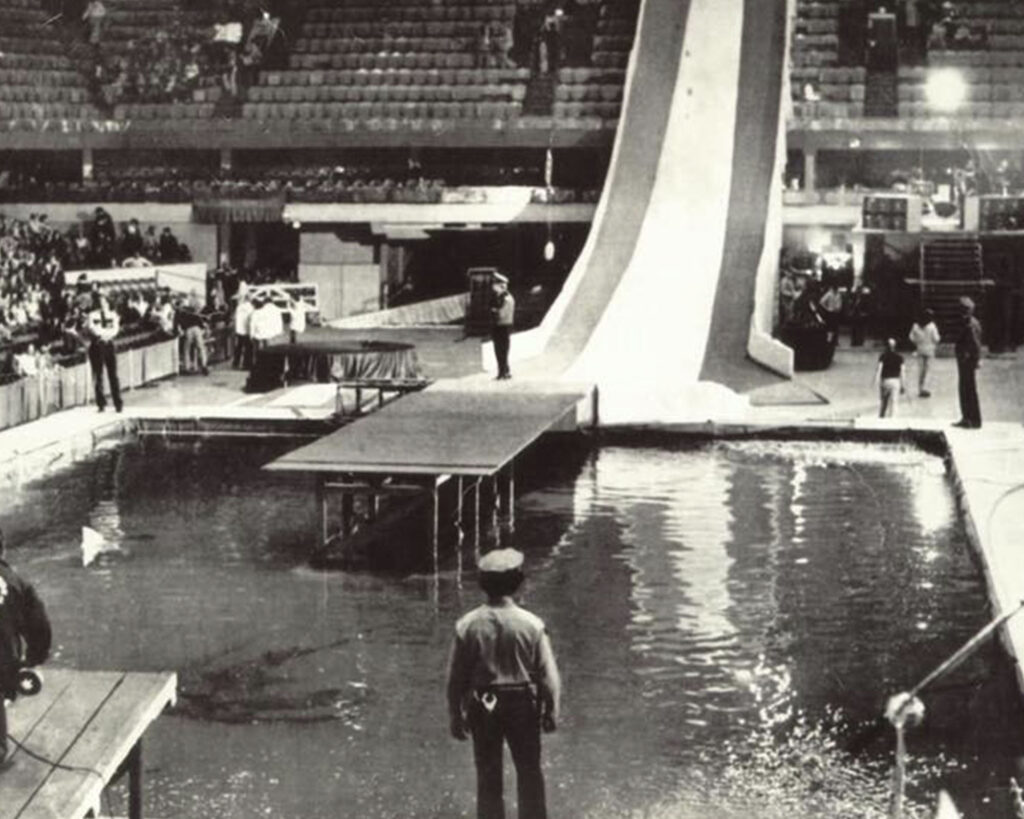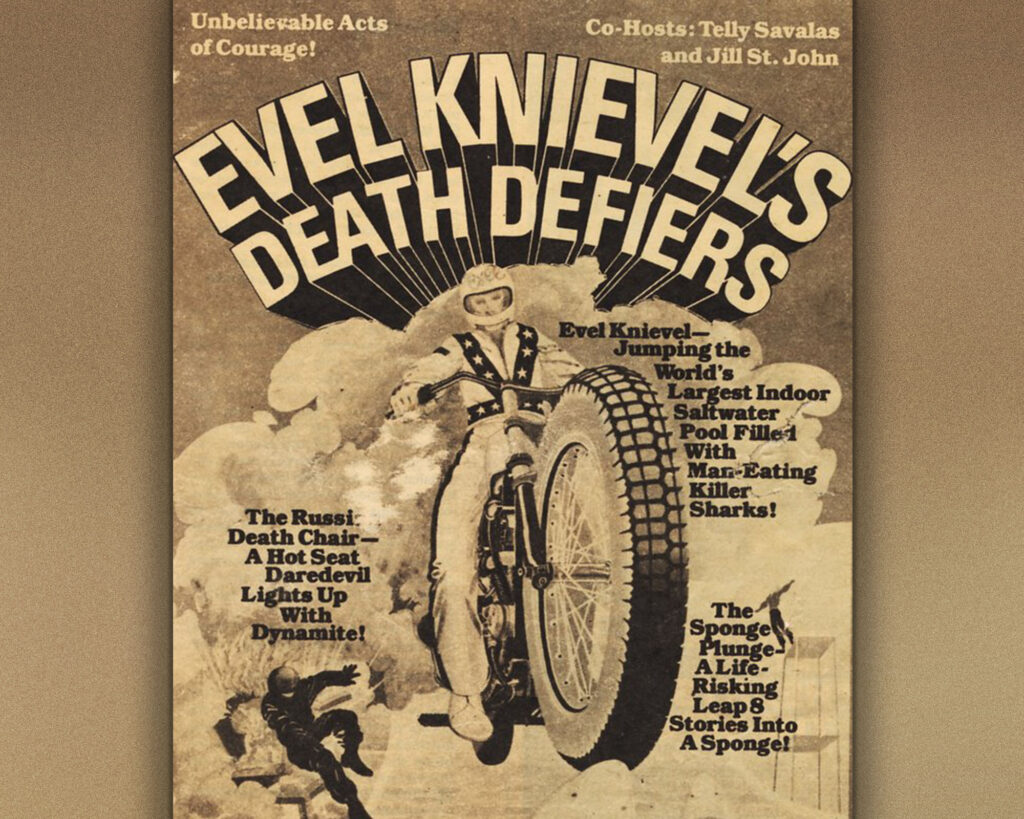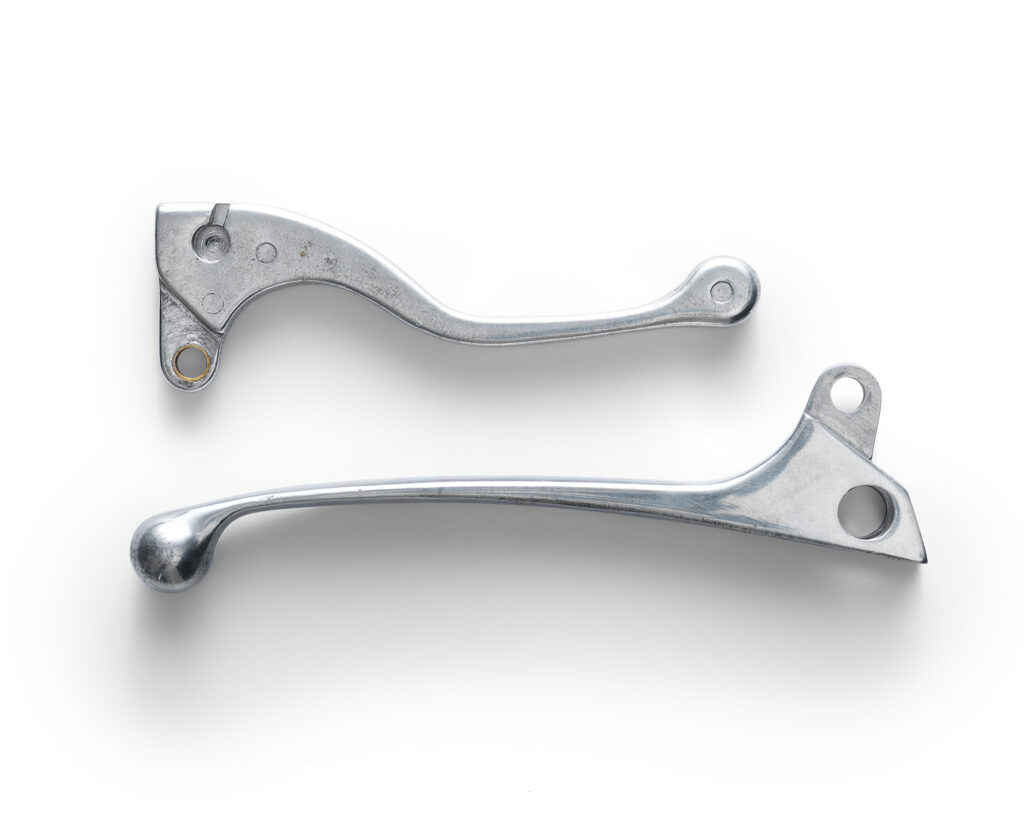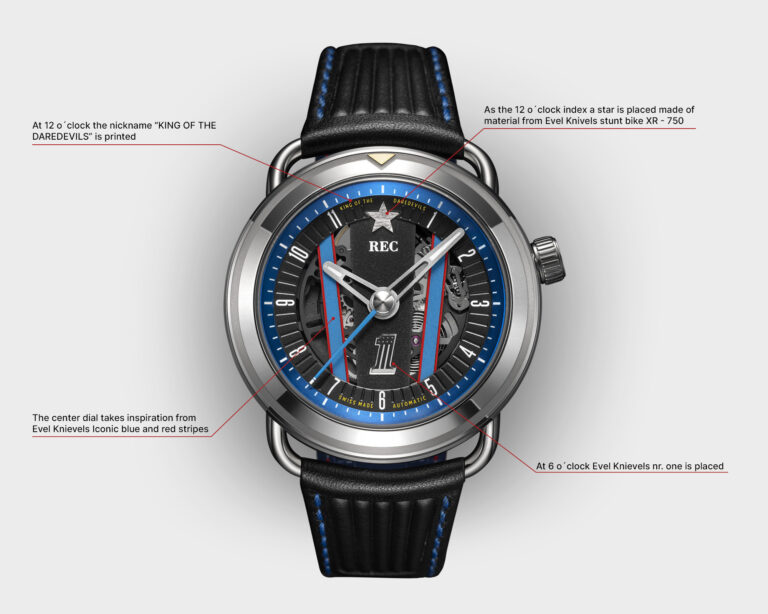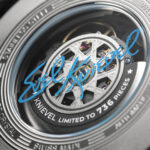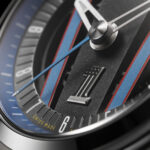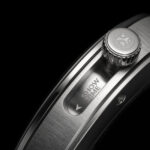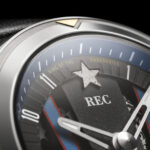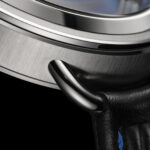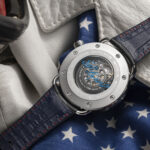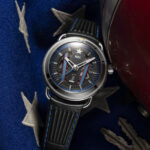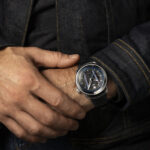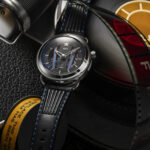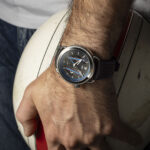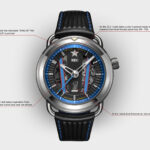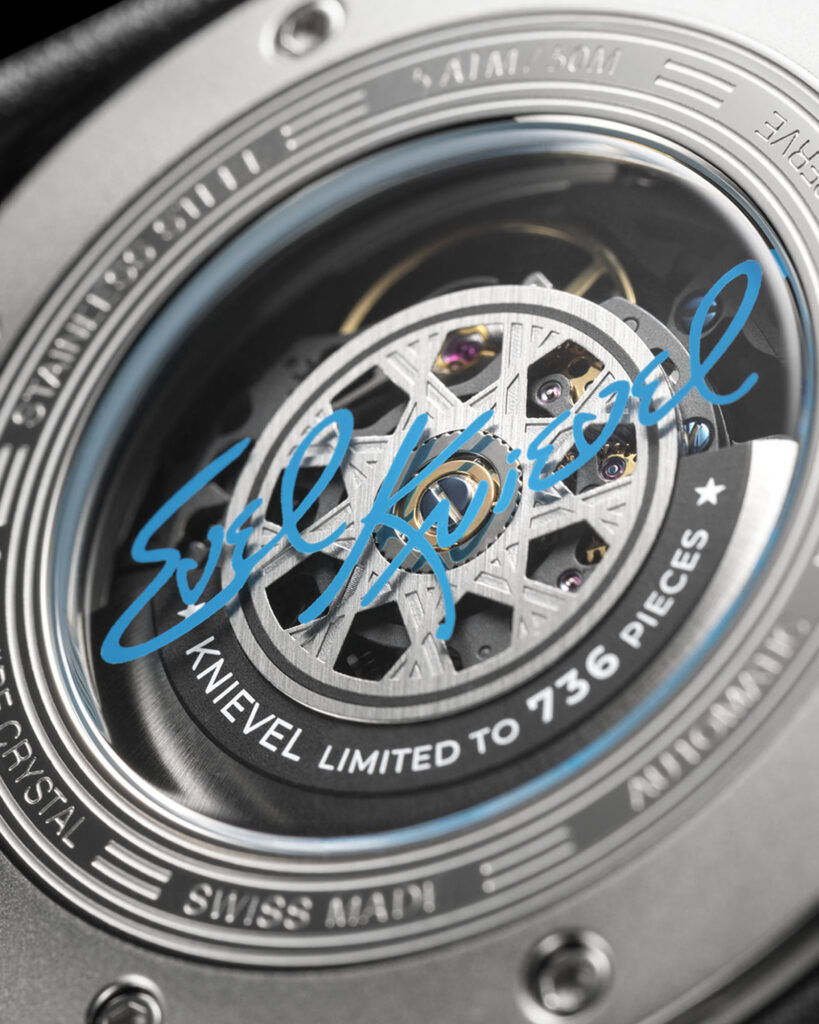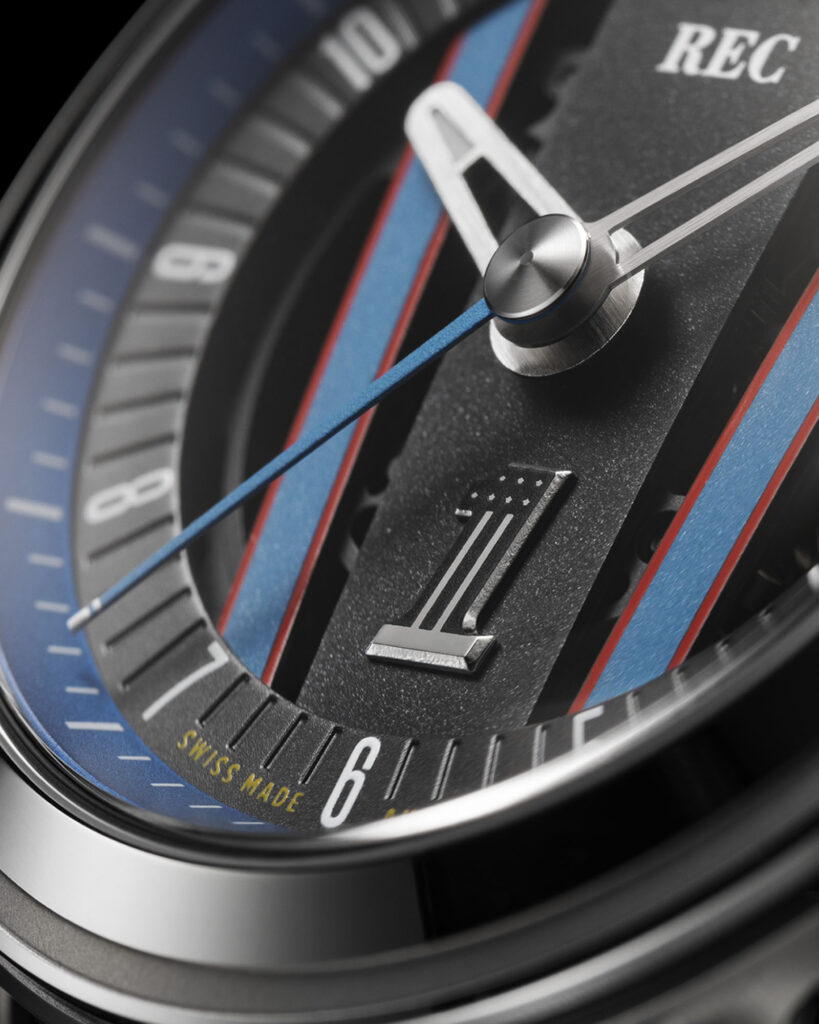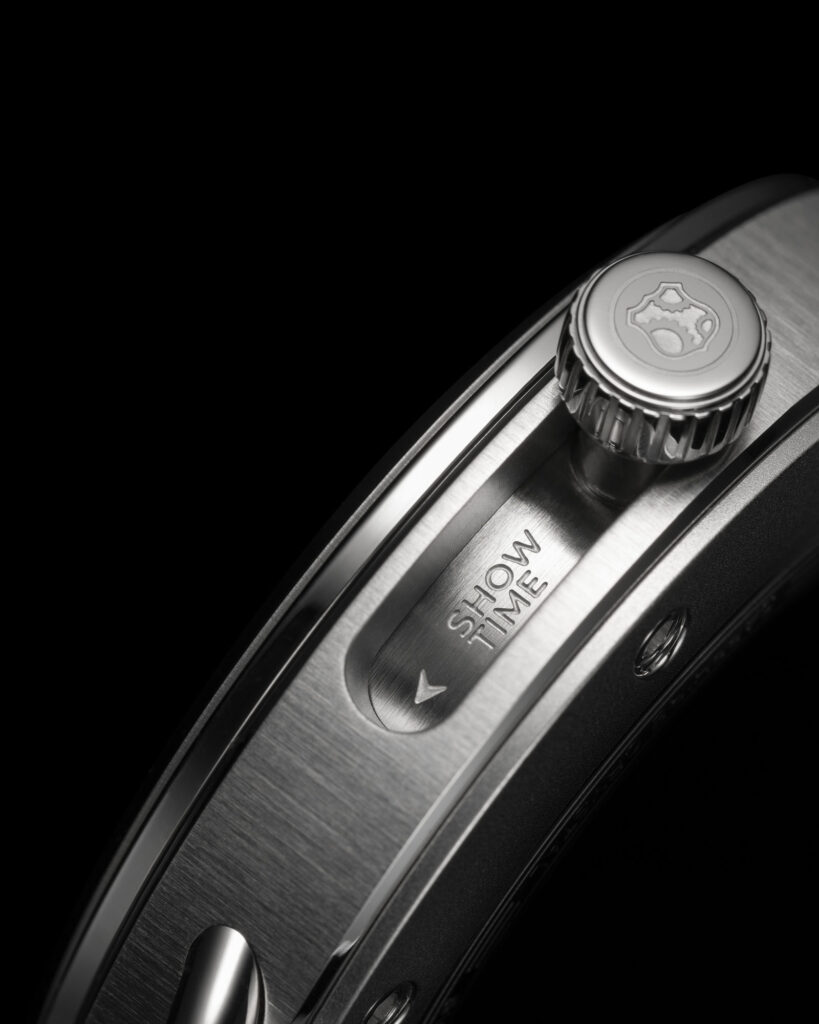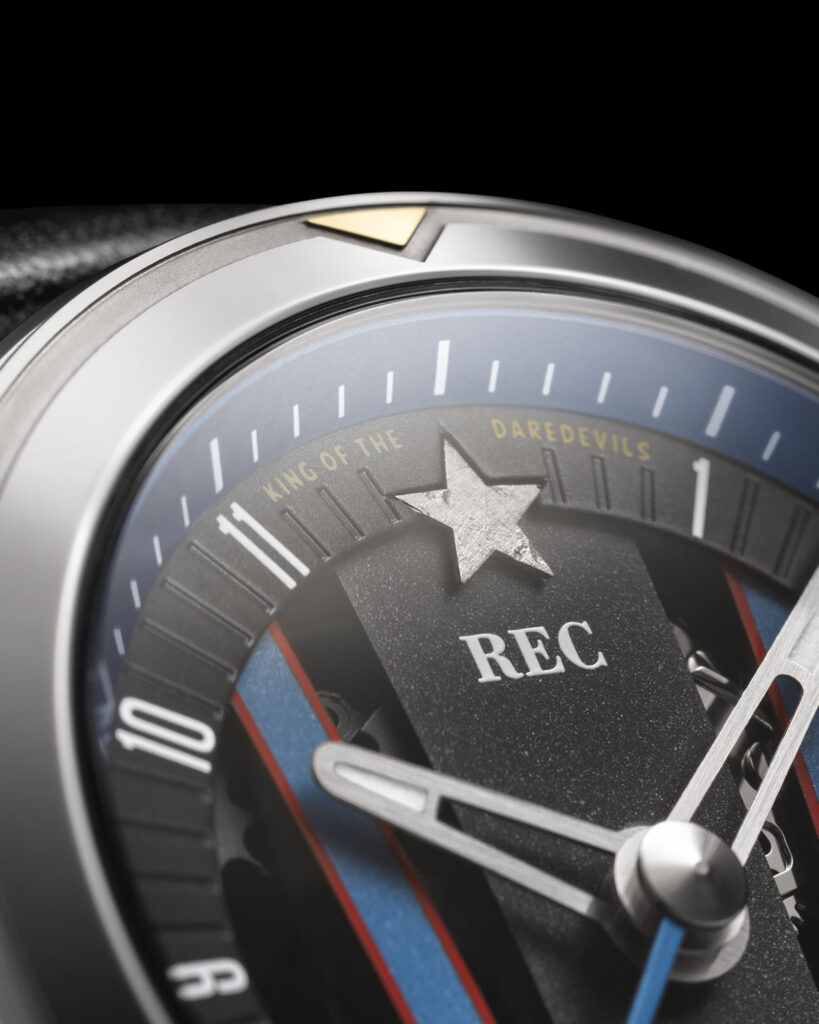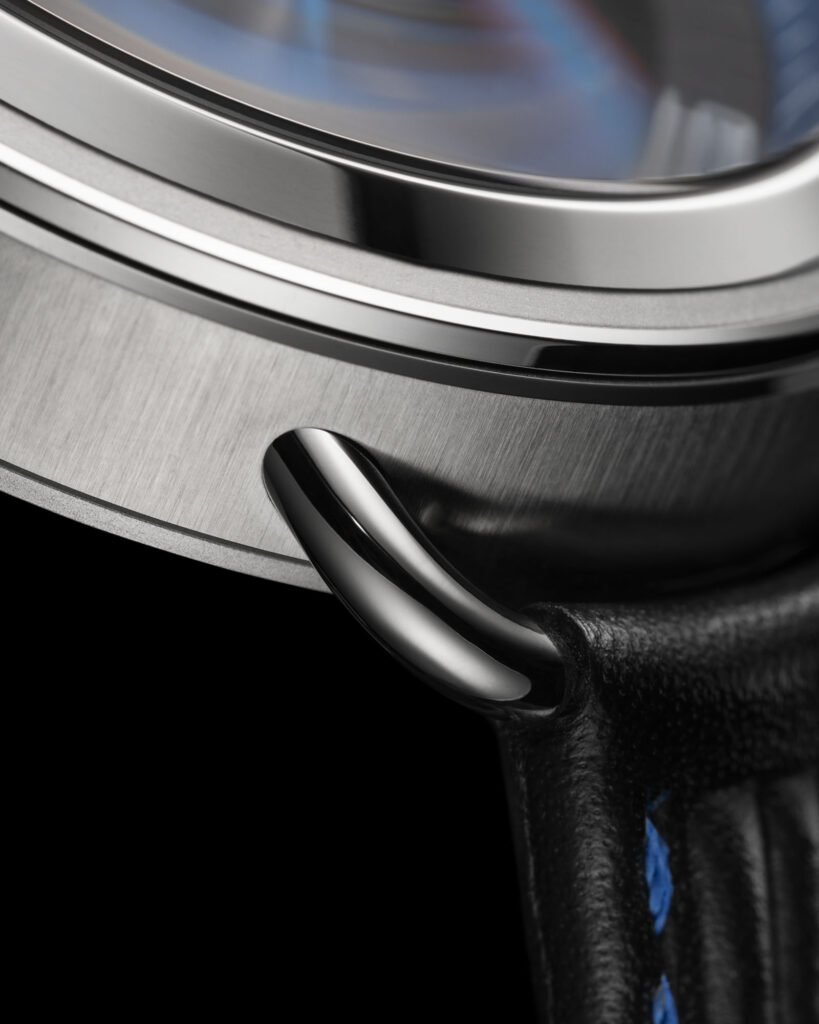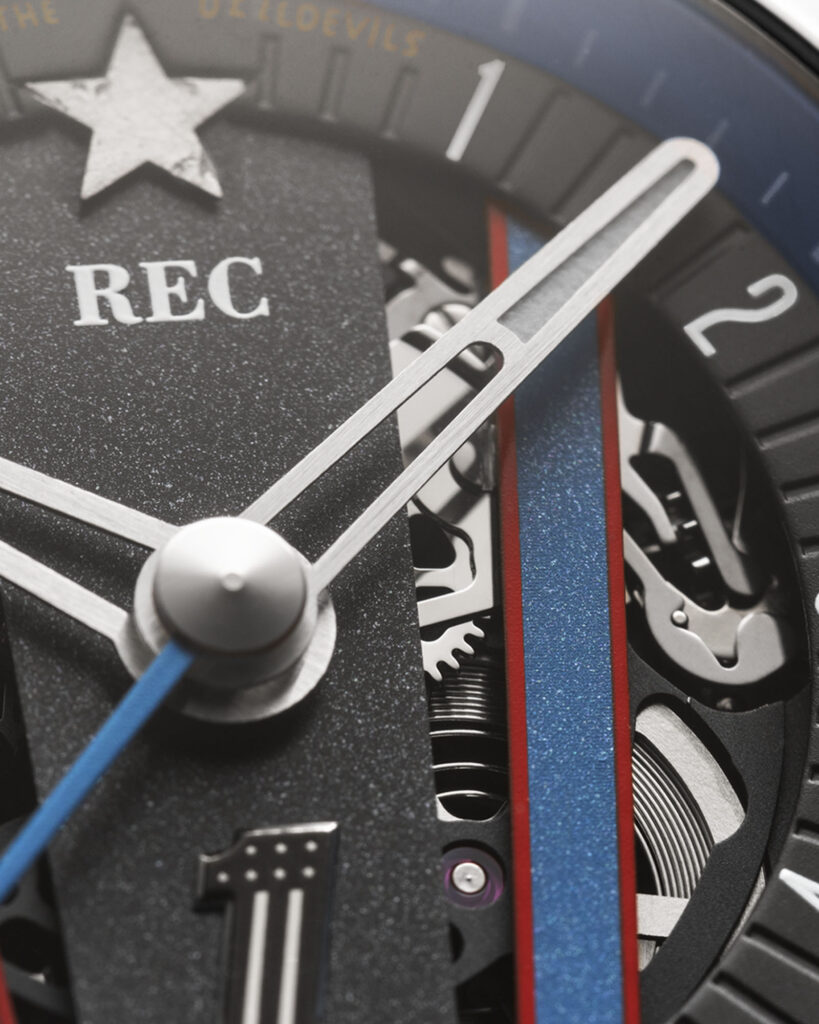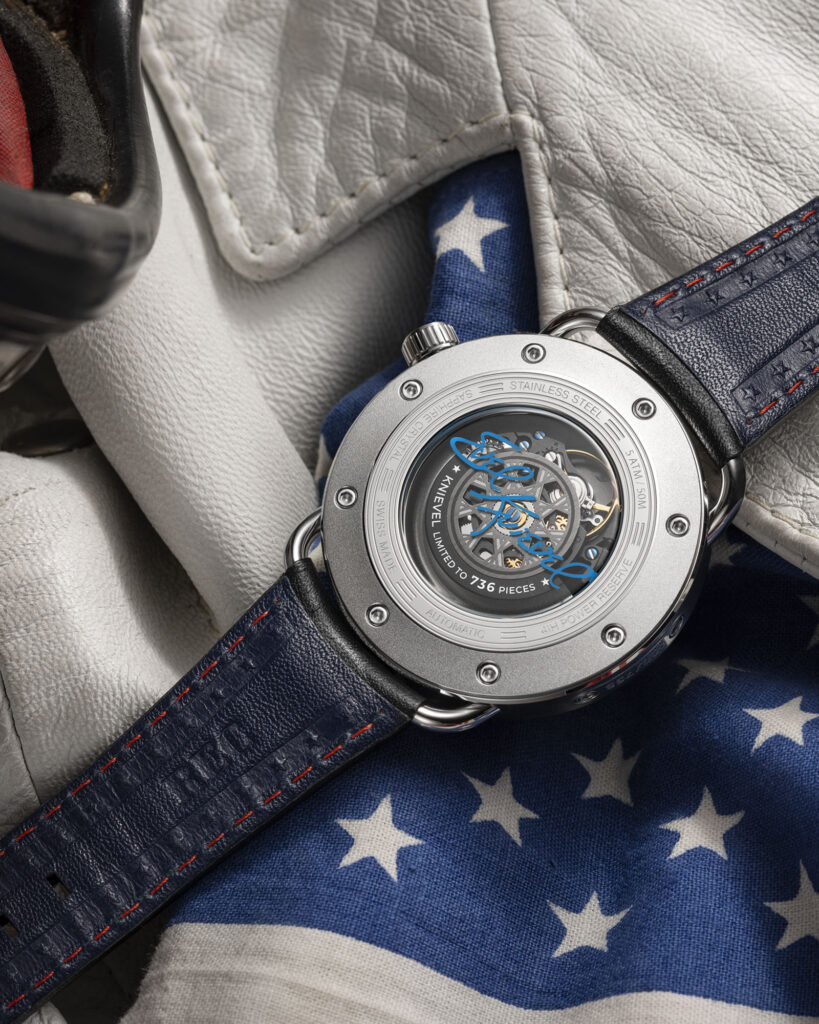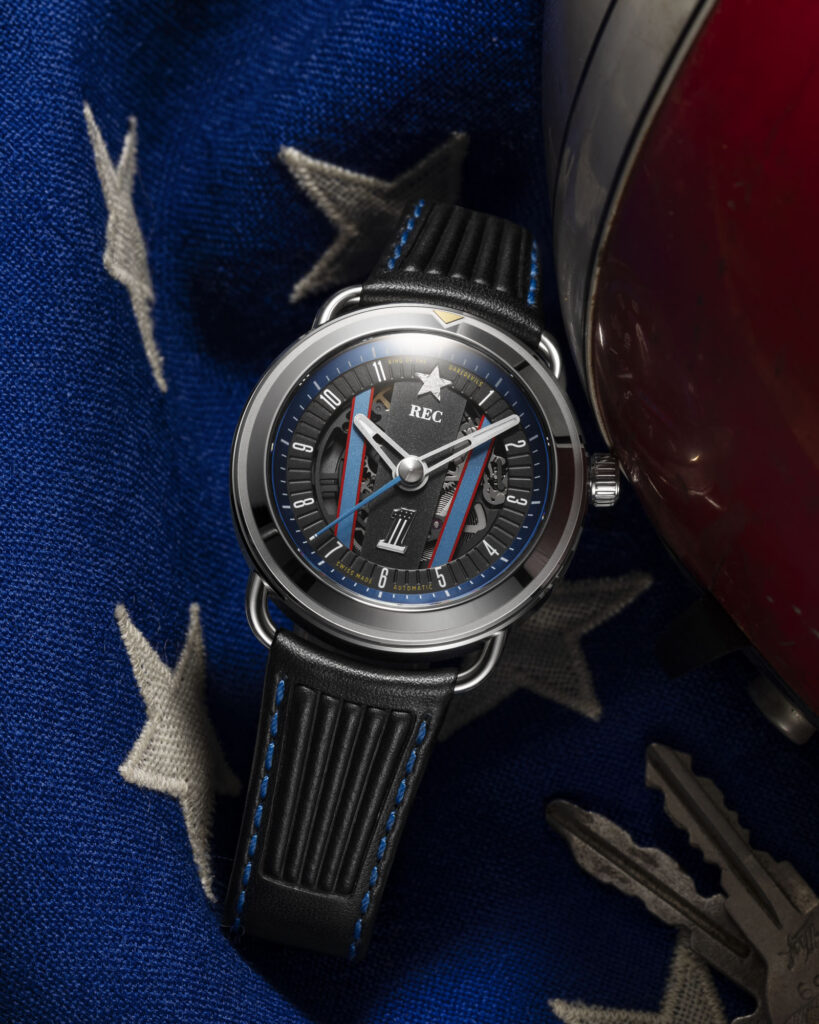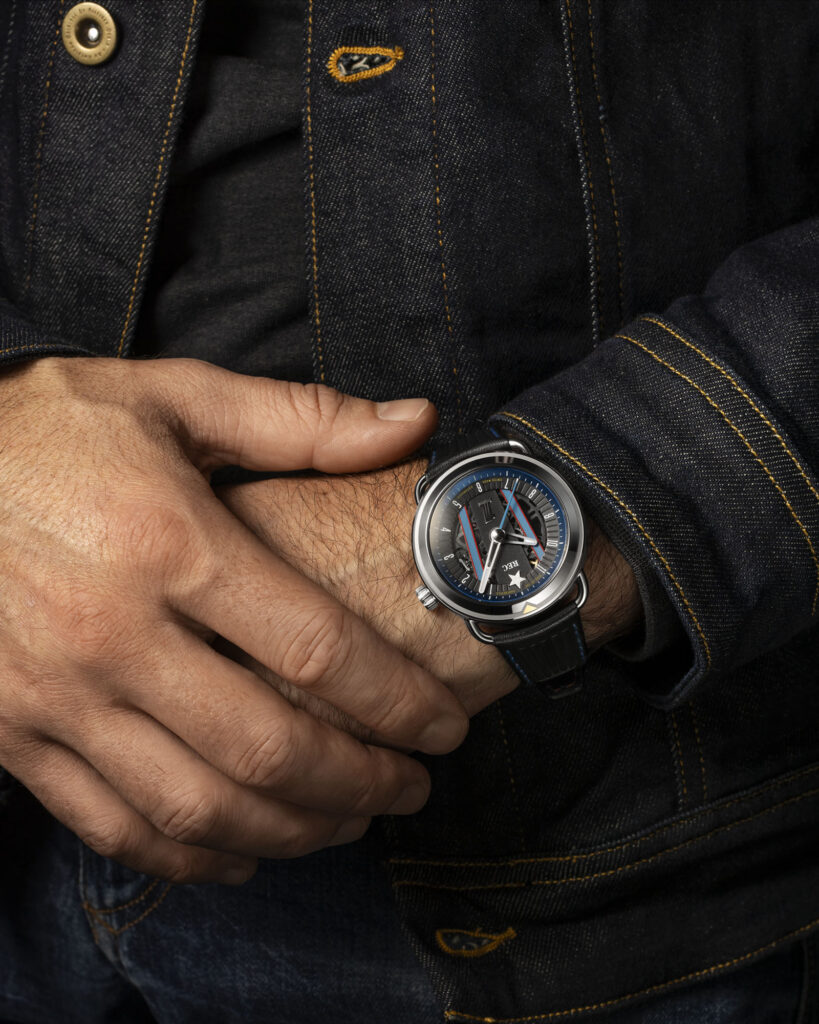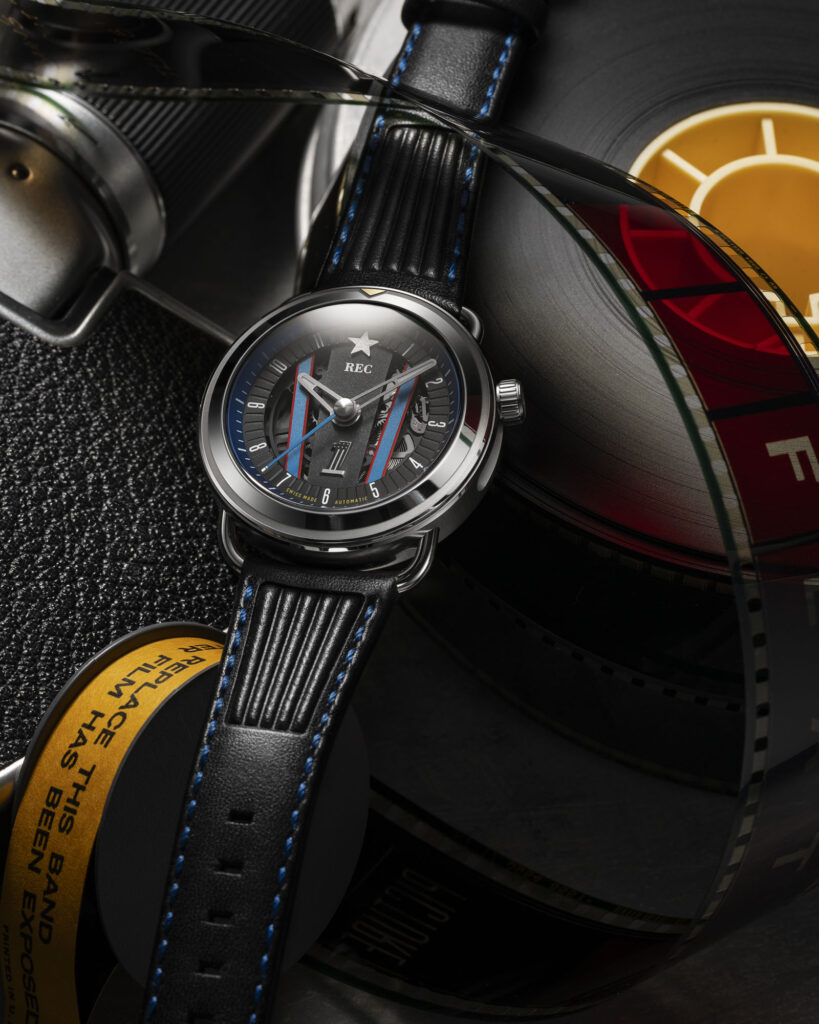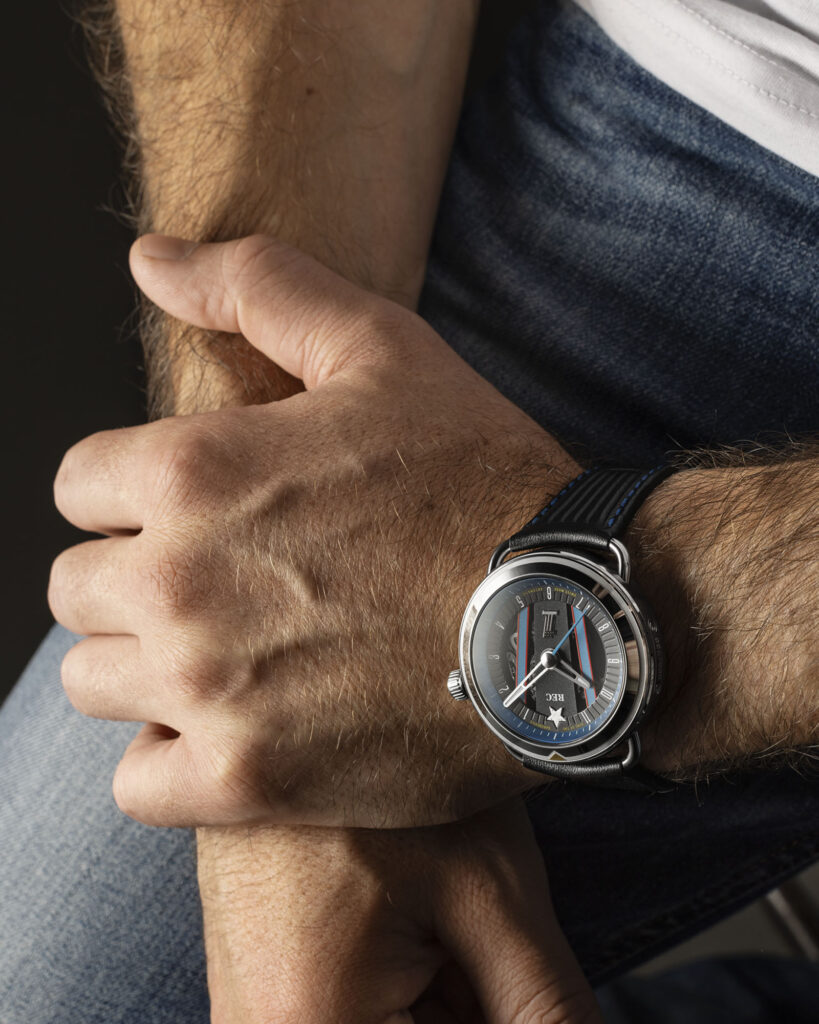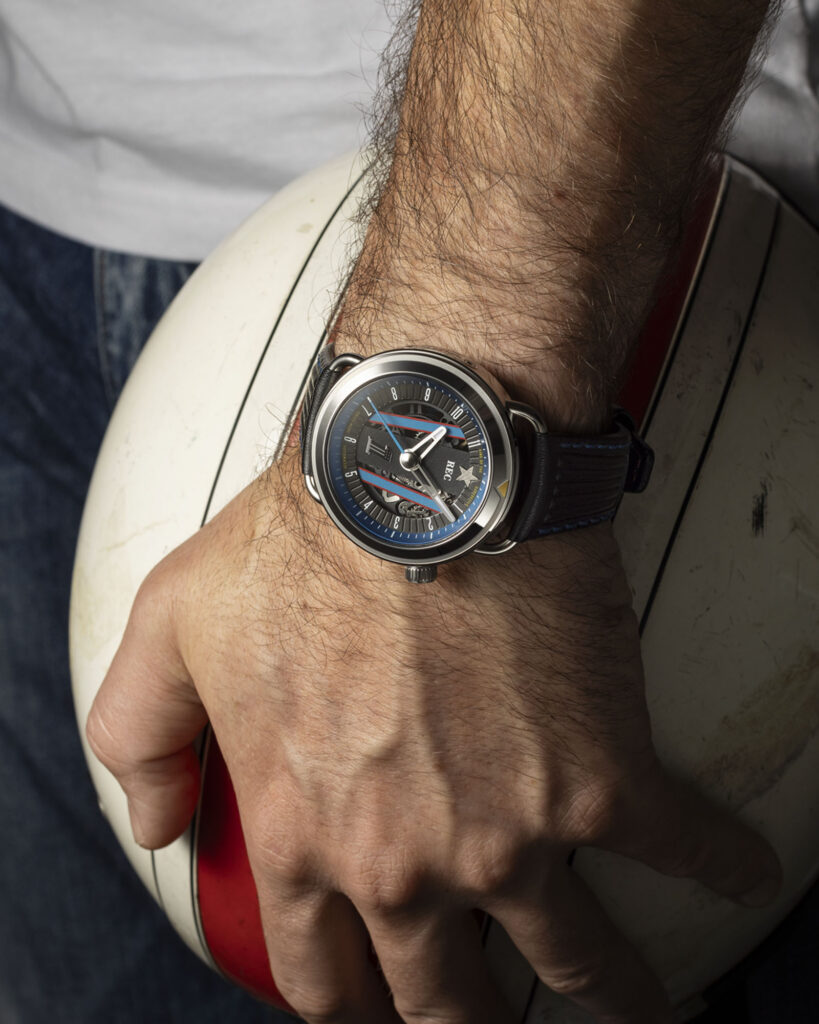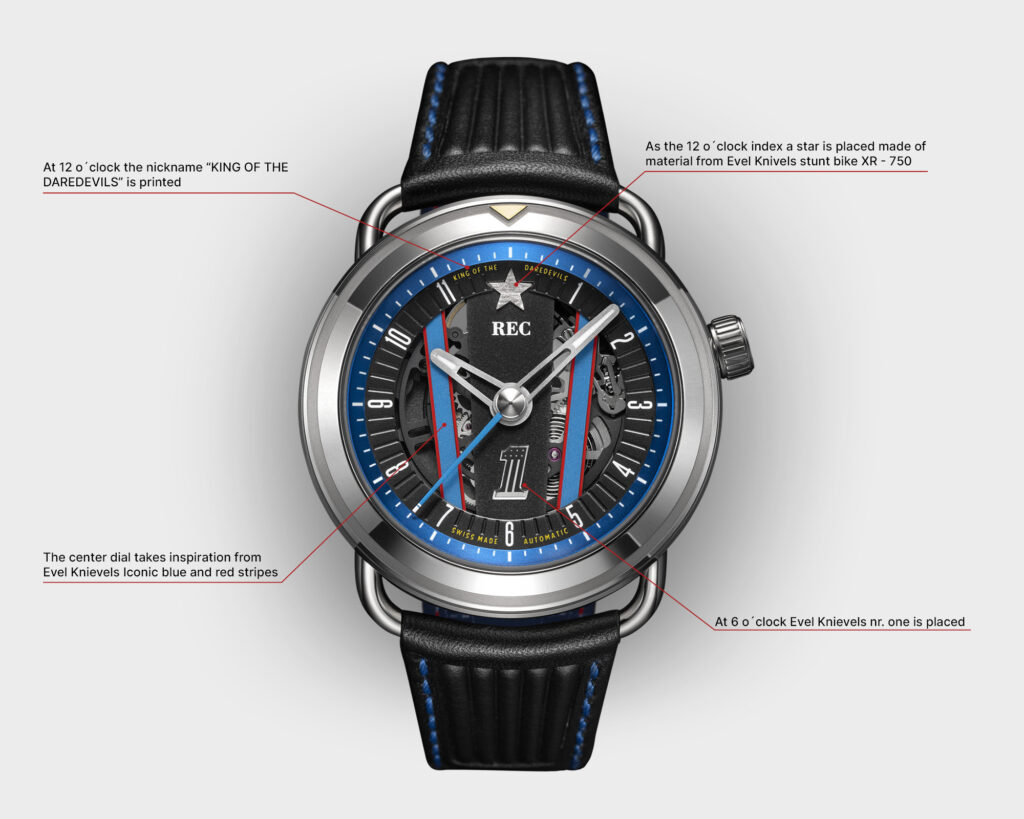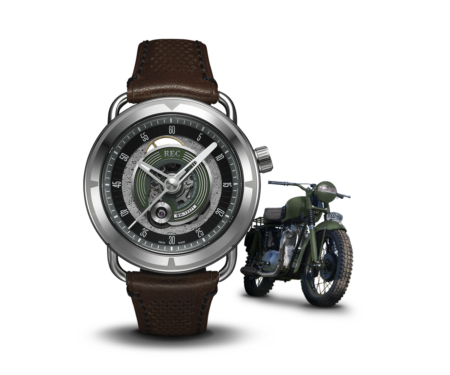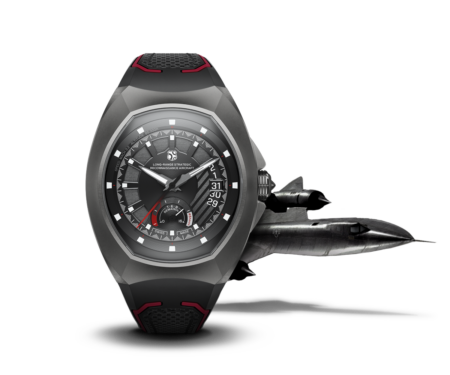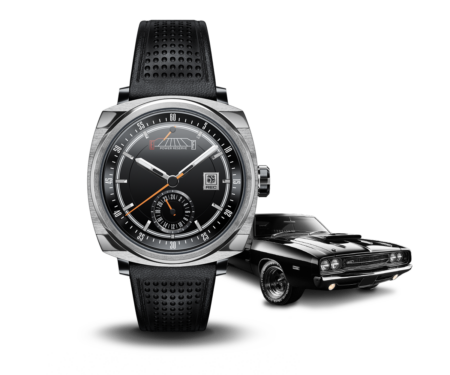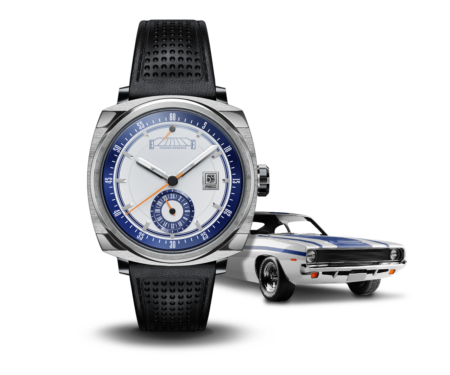DNA Edition TTT Knievel
Made from Evel Knievel’s final stuntbike, the 1977 “Shark Jump” Harley-Davidson XR750.
DNA Edition TTT Knievel
Made from Evel Knievel’s final stuntbike, the 1977 “Shark Jump” Harley-Davidson XR750.
Project TTT Knievel
DNA Edition
The TTT Knievel is a limited edition timepiece crafted from Evel Knievel’s iconic “Shark Jump” Harley-Davidson XR750 – the final stunt bike of his career.
Evel Knievel, the original daredevil showman, became a household name with his high-flying stunts, fearless bravado, and star-spangled jumpsuits.
His final jump – an ill-fated leap over a shark tank in 1977 – ended in a crash that closed the curtain on his legendary career but only amplified his myth.
Crafted using aluminum from the XR750’s original clutch levers, each TTT Knievel timepiece captures the spirit of Evel’s last leap – bold, reckless, unforgettable.
Dimensions
Dimensions
- Diameter Case: 43,0 mm
- Lug-to-lug: 46,5 mm
- Height: 12,3 mm
- Opening diameter: 33,0 mm
Movement
Movement
- Customized SELLITA cal. SW200-1 Sb
- Swiss Made
- Time only (hours, minutes, seconds)
- Automatic & manual winding
- 26 Jewels
- 41 Hours power reserver
- 28,800 bph (4hz)
- Accuracy ±15 seconds per day
Features
Features
- Star at 12-o’clock made from the handlebar levers of Evel Knievels “Shark Jump” XR750 bike
- Fully skeletonized sandwich dial
- 30-degree dial rotation between two positions “RIDE” and “DRESS via crown or bezel
- Exhibition caseback
- Serial number placque
- 3-year full warranty from date of delivery
- Water resistance 5 ATM, 50 meters
Materials
Materials
- Crystal (Dial Glass): Sapphire crystal w. 3 layers of anti-reflection coating
- Caseback glass: Mineral glass
- Case & crown: 316L Stainless steel
- Clasp: 316L Stainless steel
Strap
Strap
- Width at lugs: 22,0mm
- Width at clasp: 18,0mm
- Length 125 / 75mm
- Materials: Double calf-skin leather
The ‘TTT’ name
The ‘TTT’ name
“TTT” stands for “Twist The Throttle,” reflecting the motorcycle-inspired design of the collection. This innovative dual-case construction allows wearers to rotate the dial 30 degrees clockwise, seamlessly adapting the watch for different styles and occasions.
Legal disclaimer
Legal disclaimer
- Developed and produced under License from K&K Promotions
King of the Daredevils
Evel Knievel
Robert Craig Knievel – better known as Evel Knievel – turned televised danger into national appointment viewing.
Draped in star-spangled leathers, he logged 175 jumps and 35 broken bones, securing his place as America’s legendary daredevil.
Dual-case construction
The Hidden Star
Rotate the case 30° into Ride mode and the dial realigns for perfect readability on the bars.
A hidden shooting star appears near the crown – a wink to Knievel’s skyward ambitions.
Splitit installment payments at 0% interest: How does it work exactly?
Splitit allows you to split the total payment over a maximum of twelve months using your credit card. This service is free, involves no credit checks or applications, and means you can choose to split your payment into monthly installments.
To use this payment method all you need a credit card with a sufficient amount of available credit. Splitit authorizes the total order value—but don’t worry, this is not taken in full when you complete the purchase. At the time of shipping, only the first installment will be charged to your credit card. A payment authorization for the outstanding amount of your purchase will be held during for up to 30 days after placing your order.
After each monthly payment, the amount held from your available balance will be reduced to the new remaining balance (the held amount might appear as “pending”). To ensure that the authorization of your credit card is valid for the entire payment period, the authorization will be renewed every 21 days.
Are there any extra fees involved?
No, this is an interest-free payment method with no additional fixed fees, service fees, interest, or hidden fees of any kind.
Which credit cards does Splitit support?
You can pay using Splitit with a Mastercard or Visa cards. Debit cards and pre-paid cards are not accepted.
Do I have to maintain the required available credit amount on my credit card?
You must maintain a sufficient amount on your credit card for both the monthly payment and for the full outstanding amount of your purchase for up to 30 days after placing the order. The average authorization typically drops off within 5-10 working days. The authorized amount will be charged only in the event that a monthly payment is declined (the authorization hold might appear as “pending” on your credit card bill).
What happens if I return the product?
If you decide to not keep the ordered item(s), upon return of the items we will reimburse the installments that have already been paid and cancel the outstanding payments.
When and where can I choose the number of installments for my payment plan?
Installment payments with Splitit can be chosen as a payment option during the checkout process. Here, you can choose the number of installments in your payment plan and view the monthly payment amounts.
